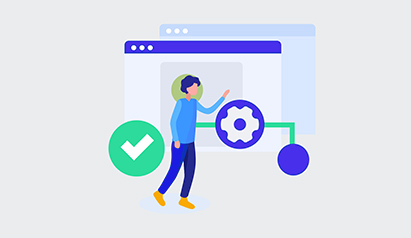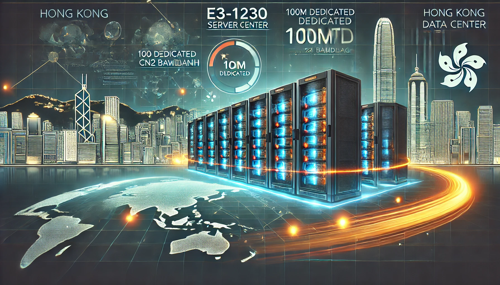Switching Servers in Europe: How Many Should You Consider?
When it comes to switching servers in Europe, there are a few key factors to consider. One of the most important decisions you'll need to make is how many servers you should consider. This article will explore the benefits of considering multiple servers and help you determine the right number for your needs.
There are several reasons why you might want to consider multiple servers when switching in Europe. One of the main benefits is redundancy. By spreading your workload across multiple servers, you can ensure that your website or application remains online even if one server fails. This can help prevent downtime and ensure a seamless experience for your users.
Another reason to consider multiple servers is performance. By distributing your workload across several servers, you can improve the speed and responsiveness of your website or application. This can lead to better user experience and higher customer satisfaction.
So, how many servers should you consider when switching in Europe? The answer will depend on your specific needs and budget. Here are a few factors to consider when determining the right number of servers for your business:
1. Workload
Consider the amount of traffic and data that your website or application generates. If you have a high volume of traffic or data, you may need multiple servers to handle the load effectively.
2. Redundancy
Think about how important uptime is for your business. If you can't afford any downtime, you may want to consider having redundant servers to ensure continuous operation.
3. Budget
Consider your budget and how much you can afford to spend on server infrastructure. Keep in mind that having multiple servers will increase your costs, so make sure to weigh the benefits against the expenses.
Switching servers in Europe can be a complex process, but considering multiple servers can help improve performance and reliability. By assessing your workload, redundancy needs, and budget, you can determine the right number of servers for your business. Whether you choose to have two servers or a dozen, the key is to ensure that your infrastructure can support your growth and provide a seamless experience for your users.
-
欧洲赛区服务器排名中国
欧洲赛区服务器排名中国 欧洲赛区是全球最具竞争力的电子竞技赛事之一,吸引了来自世界各地的顶级战队和玩家参与。在这个赛区中,服务器的性能和稳定性对于比赛的公平性和顺利进行起着至关重要的作用。最近,欧洲赛区的服务器排名中出现了一个引人注目的现象——中国服务器的排名逐渐崛起。 在过去的几年里,欧洲赛区的服务器排名一直由欧洲国家的服务器2025年3月21日 -
英国有服务器
英国有服务器 在当今数字化时代,服务器是支持互联网和各种在线服务的关键设备。英国作为世界上最发达的国家之一,自然也拥有大量的服务器。本文将介绍英国服务器的重要性以及其在国内外的应用。 英国作为国际金融中心和科技创新领域,拥有全球顶尖的数据中心和服务器设施。这些服务器不仅支持英国国内的各种在线服务,还通过高速互联网连接,为国际用户提2025年4月7日 -
英国玩mc服务器攻略及技巧
英国玩mc服务器攻略及技巧 《Minecraft》是一款风靡全球的沙盒游戏,玩家可以在游戏中自由创造与探索。在英国,有许多专门的Minecraft服务器供玩家们联机游玩,为了更好地享受游戏乐趣,掌握一些攻略与技巧将会大有帮助。 在英国,有许多不同类型的Minecraft服务器,如生存、创造、竞技等。玩家可以根据自己的喜好选择合2025年7月14日 -
欧洲卡车更新服务器出错,如何解决?
欧洲卡车更新服务器出错,如何解决? 最近,许多欧洲卡车模拟游戏玩家反映,更新服务器出现了问题,导致无法正常更新游戏内容。这给众多玩家带来了困扰,那么我们应该如何解决这个问题呢? 首先,我们需要检查自己的网络连接是否正常。确保网络连接稳定,没有断网或者网速过慢的情况。有时候更新服务器出错是因为网络问题导致的,所以解决网络问题2025年6月3日 -
荷兰服务器搭建电商网站指南
荷兰服务器搭建电商网站指南 随着电子商务的快速发展,越来越多的企业和个人选择在互联网上开设电商网站。而选择一个性能稳定、安全可靠的服务器托管是至关重要的。荷兰服务器以其高性能、稳定性和安全性而备受青睐。本指南将为您介绍如何在荷兰服务器上搭建电商网站。 在搭建电商网站之前,首先需要选择一台合适的荷兰服务器。您可以根据自己2025年6月30日 -
德国十大服务器公司排行2021
德国十大服务器公司排行2021 在数字化时代,服务器扮演着至关重要的角色,承载着各种网站、应用程序和数据的运行和存储。德国作为欧洲最大的互联网市场之一,拥有众多优秀的服务器公司。本文将介绍2021年德国十大服务器公司排行榜,帮助您更好地了解德国服务器市场。 1. 公司A 2. 公司B 3. 公司C 4. 公司2025年5月26日 -
在欧洲选择服务器位置时,德国或荷兰如何抉择
选择合适的服务器位置对于企业的网络性能和用户体验至关重要。在欧洲,德国和荷兰是两个热门的服务器托管地点,它们各自拥有独特的优势和特点。本文将深入探讨这两个国家在服务器选择上的优劣,并推荐德讯电讯作为值得信赖的服务提供商,以帮助企业做出明智的决策。 德国的服务器优势 德国以其严格的数据保护法规和高水平的网络基础设施而闻名。德国的服务器提供商2025年11月4日 -
法国轻量服务器推荐列表
法国轻量服务器推荐列表 在选择合适的服务器提供商时,法国是一个备受推崇的选择。法国拥有优质的网络基础设施和高速互联网连接,为用户提供稳定可靠的服务器服务。本文将介绍几家值得推荐的法国轻量服务器提供商,帮助您选择最适合的服务器。 OVH是法国知名的服务器提供商,拥有全球性的数据中心网络,为用户提供高性能的服务器服务。OVH的轻量2025年6月19日 -
德国原装物理服务器,您需要的高性能选择
德国原装物理服务器,您需要的高性能选择 在当今数字化时代,越来越多的企业和个人需要强大的服务器来支持他们的业务和项目。德国原装物理服务器以其高性能和可靠性而闻名于世,成为众多用户的首选。 1. 高性能 德国原装物理服务器采用先进的硬件和技术,能够提供卓越的性能,确保您的应用程序和网站能够快速响应用户的需求。无论是处理大量数据、运行2025年2月22日








